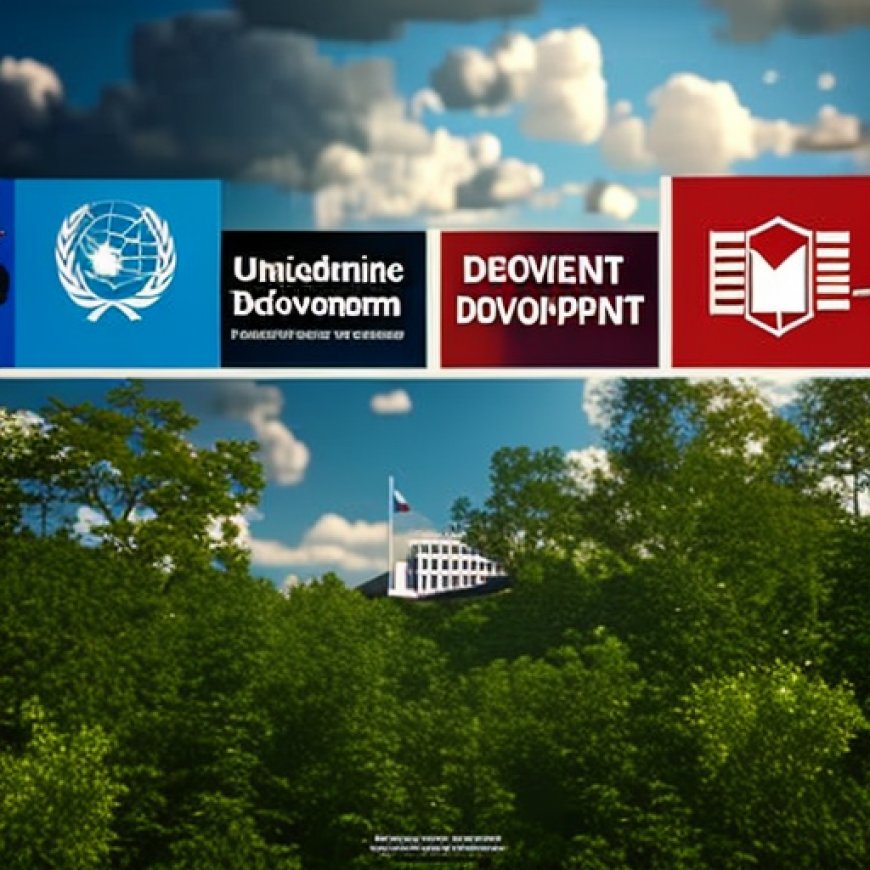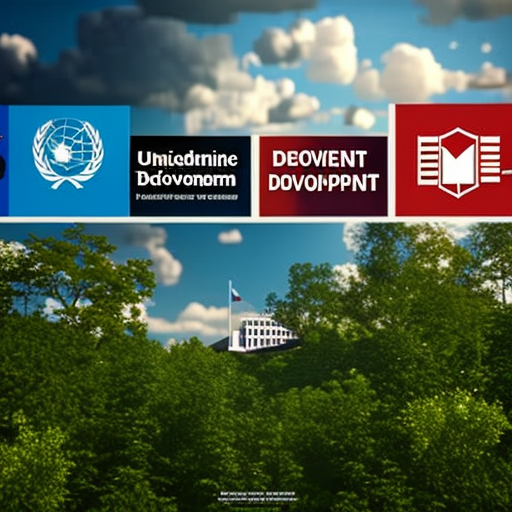What are the United Nations’ Sustainable Development Goals?
What are the United Nations' Sustainable Development Goals? Sustainability Magazine


The United Nations’ Sustainable Development Goals (SDGs)
In 2015, the United Nations Member States set the 2030 Agenda for Sustainable Development, consisting of 17 Sustainable Development Goals (SDGs), which act as a blueprint for peace and prosperity across the globe.
Each goal acts as an urgent call to action for both developed and developing countries, to overcome social and economic inequalities, while also tackling climate change.
When were the UN’s SDGs founded and implemented?
The SDGs took more than a decade to build, with work from various countries, the UN and specifically the UN Department of Economic and Social Affairs (UNDESA).
The first milestone took place at Rio de Janeiro’s Earth Summit in 1992 when more than 178 countries adopted a comprehensive plan of action to build a global partnership for sustainable development to improve human lives and protect the environment – known as Agenda 21.
Soon after, in 2000, the Millennium Declaration was adopted by Member States unanimously to share the eight Millennium Development Goals (MDGs), which aimed to reduce extreme poverty by 2015.
Over the years, even more milestones were reached, including the Johannesburg Declaration on Sustainable Development and the launch of “The Future We Want” document.
In January 2015, the General Assembly began the idea of the 2030 Agenda for Sustainable Development, with 17 SDGs at its core. This was a landmark year, where several key policies were set, including the Sendai Framework for Disaster Risk Reduction (March 2015), the Addis Ababa Action Agenda on Financing for Development (July 2015), and Paris Agreement on Climate Change (December 2015).
Now, the Division for Sustainable Development Goals (DSDG) in the UNDESA supports the SDGs, specifically relating to water, energy, climate, oceans, and technology, to name a few.
What are the United Nations’ SDGs?
- Goal 1: To end poverty in all its forms everywhere
- Goal 2: To end hunger, achieve food security and improved nutrition and promote sustainable agriculture
- Goal 3: To ensure healthy lives and promote wellbeing for all at all ages
- Goal 4: To ensure inclusive and equitable quality education and promote lifelong learning opportunities
- Goal 5: To achieve gender equality and empower women and girls
- Goal 6: To ensure the availability and sustainable management of water and sanitation for all
- Goal 7: To ensure access to affordable, reliable, sustainable and modern energy for all
- Goal 8: To promote sustained, inclusive and sustainable economic growth, full and productive employment and decent work for all
- Goal 9: Build resilient infrastructure, promote inclusive and sustainable industrialisation and foster innovation
- Goal 10: Reduce inequality within and among countries
- Goal 11: Make cities and human settlements inclusive, safe, resilient and sustainable
- Goal 12: Ensure sustainable consumption and production patterns
- Goal 13: Take urgent action to combat climate change and its impacts
- Goal 14: Conserve and sustainably use the oceans, seas and marine resources for sustainable development
- Goal 15: Protect, restore and promote sustainable use of terrestrial ecosystems, sustainably manage forests, combat desertification, and halt and reverse land degradation and halt biodiversity loss
- Goal 16: Promote peaceful and inclusive societies for sustainable development, provide access to justice for all and build effective, accountable and inclusive institutions at all levels
- Goal 17: Strengthen the means of implementation and revitalise the Global Partnership for Sustainable Development
SDGs, Targets, and Indicators
-
SDGs addressed or connected to the issues highlighted in the article:
- Goal 1: End poverty in all its forms everywhere
- Goal 2: End hunger, achieve food security and improved nutrition and promote sustainable agriculture
- Goal 3: Ensure healthy lives and promote wellbeing for all at all ages
- Goal 6: Ensure the availability and sustainable management of water and sanitation for all
- Goal 7: Ensure access to affordable, reliable, sustainable and modern energy for all
- Goal 10: Reduce inequality within and among countries
- Goal 11: Make cities and human settlements inclusive, safe, resilient and sustainable
- Goal 12: Ensure sustainable consumption and production patterns
- Goal 13: Take urgent action to combat climate change and its impacts
- Goal 14: Conserve and sustainably use the oceans, seas and marine resources for sustainable development
- Goal 15: Protect, restore and promote sustainable use of terrestrial ecosystems, sustainably manage forests, combat desertification, and halt and reverse land degradation and halt biodiversity loss
- Goal 16: Promote peaceful and inclusive societies for sustainable development, provide access to justice for all and build effective, accountable and inclusive institutions at all levels
- Goal 17: Strengthen the means of implementation and revitalize the Global Partnership for Sustainable Development
-
Specific targets under those SDGs based on the article’s content:
- Target 1.1: By 2030, eradicate extreme poverty for all people everywhere
- Target 2.1: By 2030, end hunger and ensure access by all people, in particular the poor and people in vulnerable situations, including infants, to safe, nutritious and sufficient food all year round
- Target 3.8: Achieve universal health coverage, including financial risk protection, access to quality essential healthcare services, and access to safe, effective, quality, and affordable essential medicines and vaccines for all
- Target 6.1: By 2030, achieve universal and equitable access to safe and affordable drinking water for all
- Target 7.1: By 2030, ensure universal access to affordable, reliable, and modern energy services
- Target 10.2: By 2030, empower and promote the social, economic, and political inclusion of all, irrespective of age, sex, disability, race, ethnicity, origin, religion or economic or other status
- Target 11.1: By 2030, ensure access for all to adequate, safe and affordable housing and basic services and upgrade slums
- Target 12.2: By 2030, achieve the sustainable management and efficient use of natural resources
- Target 13.1: Strengthen resilience and adaptive capacity to climate-related hazards and natural disasters in all countries
- Target 14.2: By 2020, sustainably manage and protect marine and coastal ecosystems to avoid significant adverse impacts
- Target 15.1: By 2020, ensure the conservation, restoration and sustainable use of terrestrial and inland freshwater ecosystems and their services
- Target 16.7: Ensure responsive, inclusive, participatory and representative decision-making at all levels
- Target 17.16: Enhance the Global Partnership for Sustainable Development, complemented by multi-stakeholder partnerships that mobilize and share knowledge, expertise, technology and financial resources
-
Indicators mentioned or implied in the article:
- Indicator 1.1.1: Proportion of population below the international poverty line, by sex, age, employment status and geographical location
- Indicator 2.1.1: Prevalence of undernourishment
- Indicator 3.8.1: Coverage of essential health services
- Indicator 6.1.1: Proportion of population using safely managed drinking water services
- Indicator 7.1.1: Proportion of population with access to electricity
- Indicator 10.2.1: Proportion of people living below 50 percent of median income, by age, sex and persons with disabilities
- Indicator 11.1.1: Proportion of urban population living in slums, informal settlements or inadequate housing
- Indicator 12.2.1: Material footprint, material footprint per capita, and material footprint per GDP
- Indicator 13.1.1: Number of deaths, missing persons and directly affected persons attributed to disasters per 100,000 population
- Indicator 14.2.1: Proportion of national exclusive economic zones managed using ecosystem-based approaches
- Indicator 15.1.1: Forest area as a proportion of total land area
- Indicator 16.7.1: Proportions of positions (by sex, age, persons with disabilities and population groups) in public institutions (national and local legislatures, public service and judiciary) compared to national distributions
- Indicator 17.16.1: Number of countries reporting progress in multi-stakeholder development effectiveness monitoring frameworks that support the achievement of the Sustainable Development Goals
| SDGs | Targets | Indicators |
|---|---|---|
| Goal 1: End poverty in all its forms everywhere | Target 1.1: By 2030, eradicate extreme poverty for all people everywhere | Indicator 1.1.1: Proportion of population below the international poverty line, by sex, age, employment status and geographical location |
| Goal 2: End hunger, achieve food security and improved nutrition and promote sustainable agriculture | Target 2.1: By 2030, end hunger and ensure access by all people, in particular
Behold! This splendid article springs forth from the wellspring of knowledge, shaped by a wondrous proprietary AI technology that delved into a vast ocean of data, illuminating the path towards the Sustainable Development Goals. Remember that all rights are reserved by SDG Investors LLC, empowering us to champion progress together. Source: sustainabilitymag.com
Join us, as fellow seekers of change, on a transformative journey at https://sdgtalks.ai/welcome, where you can become a member and actively contribute to shaping a brighter future.
|








